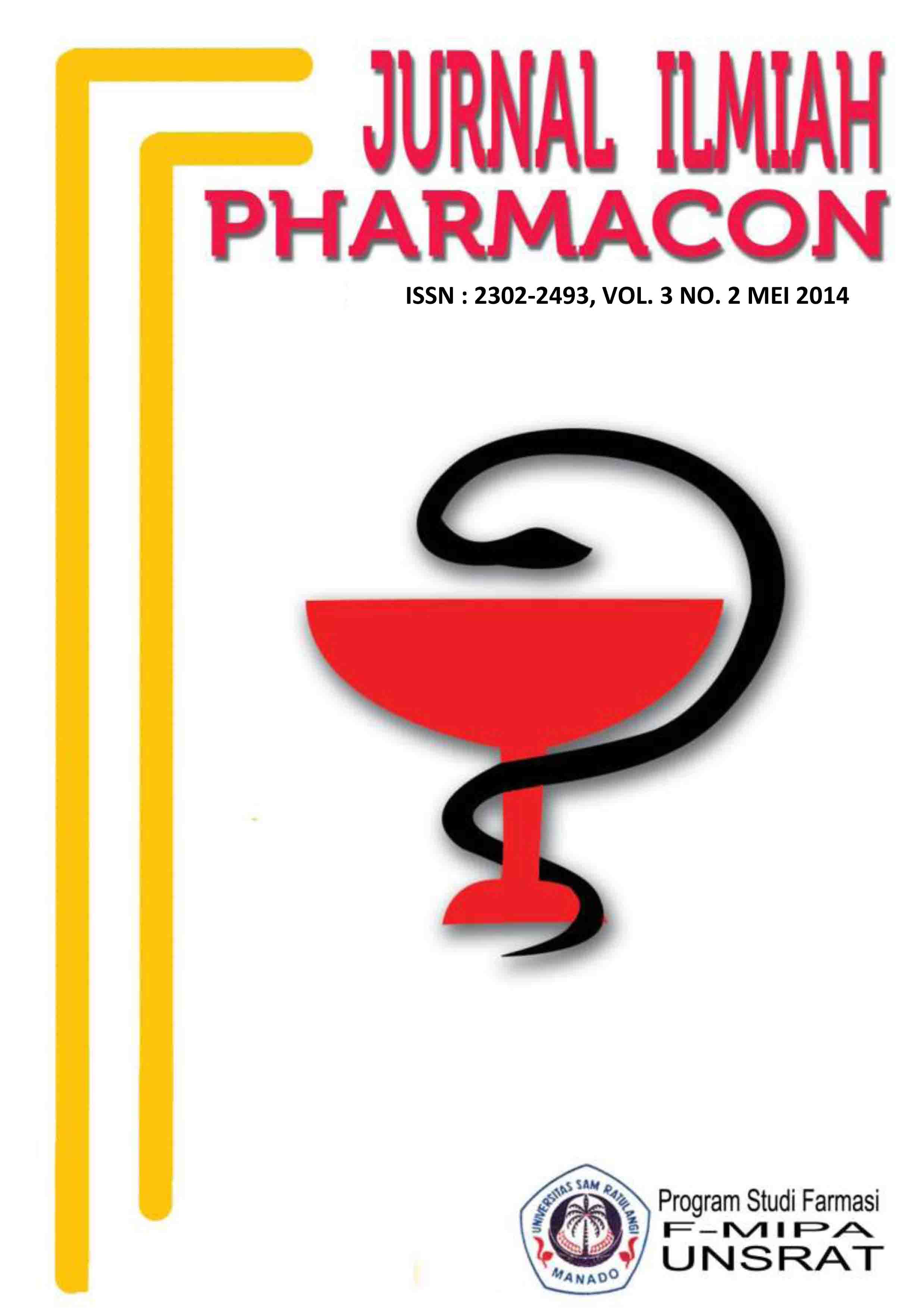KAJIAN PENATALAKSANAAN TERAPI PENGOBATAN DEMAM BERDARAH DENGUE (DBD) PADA PENDERITA ANAK YANG MENJALANI PERAWATAN DI RSUP PROF. DR. R.D KANDOU TAHUN 2013
DOI:
https://doi.org/10.35799/pha.3.2014.4771Abstract
Dengue hemorrhagic fever (DHF) is an acute epidemic disease caused by a virus transmitted by the Aedes aegypti and Aedes albopictus. Morbidity rate of dengue in the province of North Sulawesi especially city of Manado in 2011 of 156 cases from a total of 1485 cases in all regions of the province of North Sulawesi (Anonymous, 2011). This study aims to assess the therapy of DHF and Investigate related problem of DHF therapy in children patient. Data collection was conducted retrospectively from February to March 2013 at Prof Dr. R.D Kandou hospital by analyzing 74 medical record data descriptively. Therapy of treatment in DHF patients consists of supportive therapy 100% and symptomatic therapy consist antipyretic therapy 74.73%, antacids and antiulcer therapy 20.27%, antiemetika therapy 17.02%, diuretic therapy 5.40% and sedative therapy 2.70%. The related problem of therapy consist without indication therapy 59.49% and duplication of therapy 1.35%.
Â
Key words : DHF, Children Patient, Supportive Therapy and Symptomatic Therapy
Â
Downloads
How to Cite
Issue
Section
License
Authors who publish with this journal agree to the following terms:
- Authors retain copyright and grant the journal right of first publication with the work simultaneously licensed under a Creative Commons Attribution-NonCommercial 4.0 International License that allows others to share the work with an acknowledgement of the work's authorship and initial publication in this journal.
- Authors are permitted and encouraged to post their work online (e.g., in institutional repositories or on their website) prior to and during the submission process, as it can lead to productive exchanges, as well as earlier and greater citation of published work (See The Effect of Open Access)










